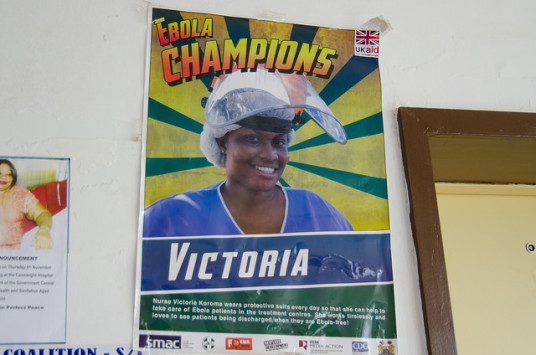After the 2010 earthquake in Haiti and the more recent Ebola crisis in Sierra Leone, billions of foreign aid dollars flowed into those countries. But figuring out how that money was spent has been enormously frustrating our two guests.
The Center for Global Development’s Vijaya Ramachandran spent years trying to account for the aid money in Haiti. After the quake killed more than 200,000 people, U.S. and foreign governments committed $6 billion and private contributors pledged another $3 billion. Ramachandran explains that much of the U.S. money was disbursed to private contractors, NGOs and other U.S. government agencies like the military.
“But after that, we don’t know what happens,” she tells us. “So the U.S. government might be collecting these data, but they don’t make them public. So we don’t know who the NGOs or the private contractors have given the money to, what kinds of services they have delivered to Haitians. We don’t know whether these programs worked. I found that very frustrating.”

Ramachandran’s colleagues even filed Freedom of Information Act requests in their search for answers. But she says they did not receive the information they sought, and responses were frequently delayed and inadequate.
Freelance journalist Amy Maxmen also tracked foreign aid expenditure like Ramachandran — this time with the Ebola response in Sierra Leone. “The numbers don’t match up,” she tells us.

Maxmen traveled twice to Sierra Leone to cover Ebola, with grants from the Pulitzer Center on Crisis Reporting. Tiny Spark provided investigative funds. Her story appears in the latest Newsweek magazine. She finds that of $3.3 billion dollars committed to fighting Ebola in West Africa, less than two percent was earmarked for paying frontline health workers. And many of those workers told her that they were promised so-called hazard pay but never received it.
Maxmen discovered the problem when she interviewed a nurse. “[The nurse] paused the conversation and said, ‘You know, reporters love talking to us, people love hearing our stories, but we’re not being paid at all.’ And then I said, ‘That’s what I want to hear about.'”

Maxmen and Ramachandran see a similar problem in both countries: international relief efforts have done a poor job in empowering local communities to cope with the crises themselves. Consequently, they are left off no better than before the crises hit.
Sign up for our free newsletters
Subscribe to NPQ's newsletters to have our top stories delivered directly to your inbox.
By signing up, you agree to our privacy policy and terms of use, and to receive messages from NPQ and our partners.
In both instances, Ramachandran tells us, “You see this massive foreign presence working outside the local systems, and in the end, there’s not a lot of capacity built up…to cope with their longer-term development problems. And I feel like after so many decades of trying to help other countries, we should have learned how to do this better. I don’t think we have any excuse to do the kinds of things we’re still doing.”
If you’ve worked in Haiti or West Africa or other international relief efforts, we would like to hear about your experiences. Should more of our aid dollars go to paying frontline workers responding to crises? How can we make aid flows more transparent and better strengthen local systems?
Additional Resources
Associated Press: US pledge to rebuild Haiti not being met
Vijaya Ramachandran’s CGD paper: Haiti: Where Has All the Money Gone?
Vijaya Ramachandran’s CGD blog: Haiti: Five Years After the Quake, the Band Plays On
Amy Maxmen’s Newsweek article: Frontline health workers were sidelined in $3.3bn fight against Ebola
Amy Maxmen’s Instagram and Flickr with photos from Sierra Leone
Amy Maxmen’s video of going through an Ebola checkpoint in Freetown, Sierra Leone:
[vimeo]https://vimeo.com/116433062[/vimeo]













